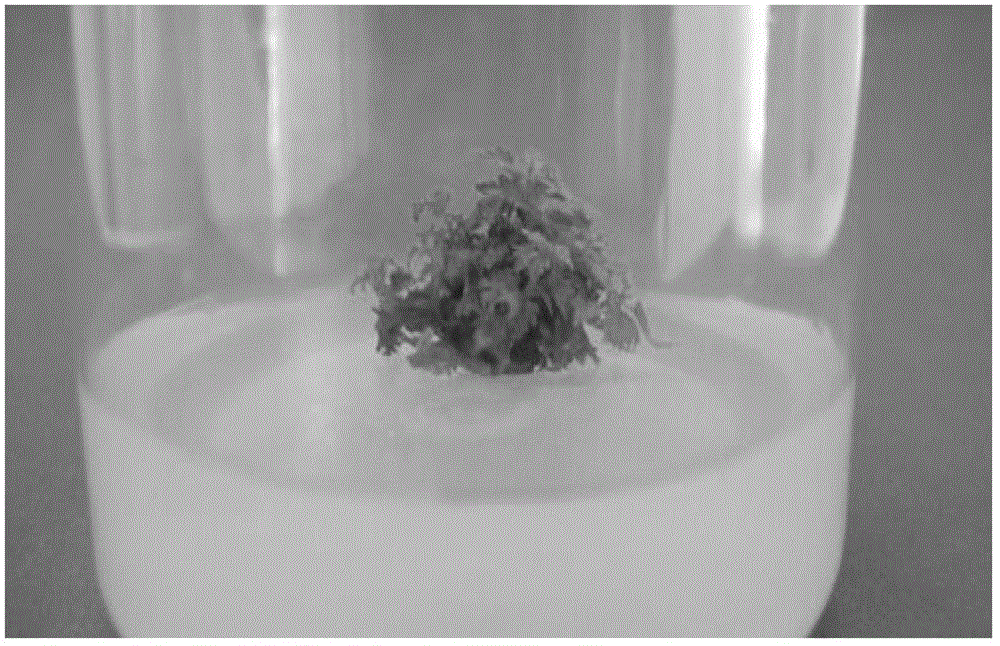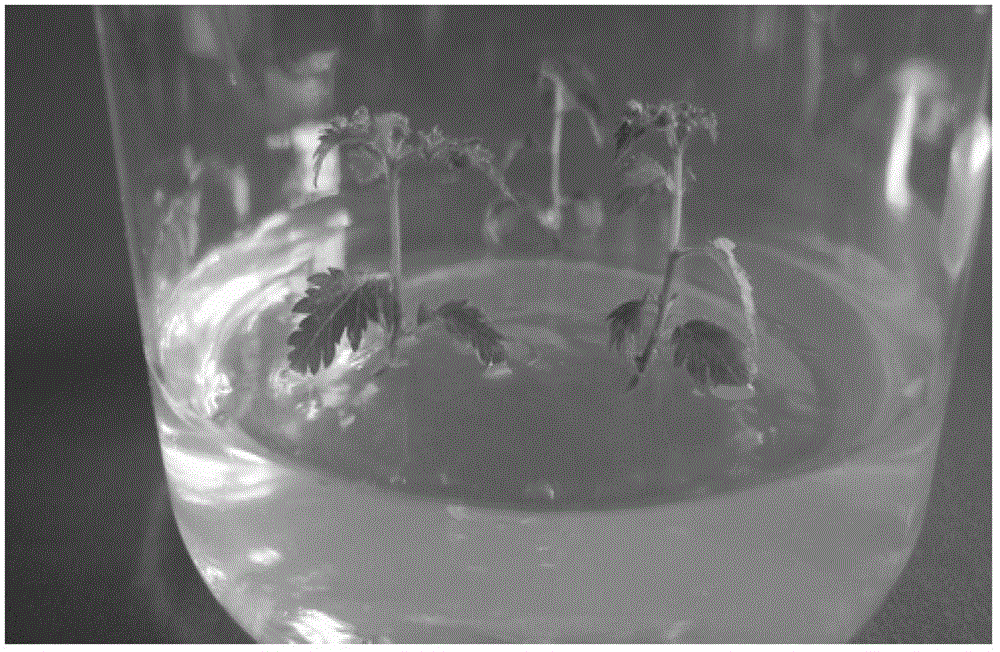Birch efficient transgenic method
A transgenic, white birch technology, applied in horticultural methods, genetic engineering, plant genetic improvement, etc., can solve the problems of low transformation efficiency and complicated transformation process, and achieve the effect of accelerating the infection rate and enhancing the ability to resist Agrobacterium infection
- Summary
- Abstract
- Description
- Claims
- Application Information
AI Technical Summary
Problems solved by technology
Method used
Image
Examples
specific Embodiment approach 1
[0021] Specific embodiment one: a kind of white birch high-efficiency transgenic method of the present embodiment is carried out according to the following steps:
[0022] 1. Select rootless white birch seedlings with a height of 1-1.5 cm for subculture, culture them in the rooting medium for 24-26 days, remove the roots and move them into the rooting medium again for 30-35 days, and select seedlings with a height of 5-6 cm Leaf tissue at 0.2-0.3 cm from the base of the second or third leaf of the birch plant is used for Agrobacterium infection;
[0023] 2. Infect the leaves in step 1 by immersing them in the Agrobacterium bacterium liquid, wherein the bacterium liquid OD 600 0.1, the infection time is 3 to 5 minutes, place the infected leaves on sterile filter paper to absorb the attached bacterial solution, replace the filter paper and absorb the bacterial solution again;
[0024] 3. Inoculate the adaxial surface of the leaves dipped in step 2 on the callus induction medium...
specific Embodiment approach 2
[0028] Embodiment 2: The difference between this embodiment and Embodiment 1 is that the rooting medium in step 1 includes WPM medium and IBA with a concentration of 0.4 mg / L. Others are the same as in the first embodiment.
specific Embodiment approach 3
[0029] Embodiment 3: The difference between this embodiment and Embodiment 1 or 2 is that the leaf tissue used for Agrobacterium infection in step 1 is the leaf at 0.3 cm from the base of the second or third robust leaf. Others are the same as in the first or second embodiment.
PUM
 Login to View More
Login to View More Abstract
Description
Claims
Application Information
 Login to View More
Login to View More - R&D
- Intellectual Property
- Life Sciences
- Materials
- Tech Scout
- Unparalleled Data Quality
- Higher Quality Content
- 60% Fewer Hallucinations
Browse by: Latest US Patents, China's latest patents, Technical Efficacy Thesaurus, Application Domain, Technology Topic, Popular Technical Reports.
© 2025 PatSnap. All rights reserved.Legal|Privacy policy|Modern Slavery Act Transparency Statement|Sitemap|About US| Contact US: help@patsnap.com



